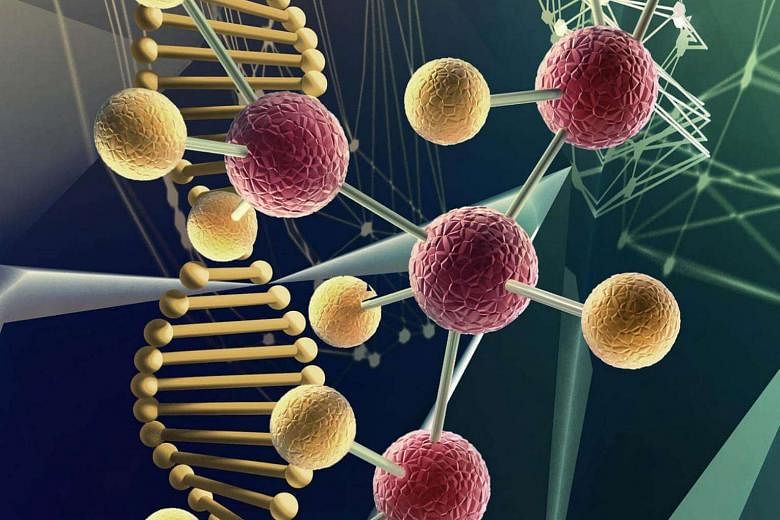The experts have known for decades that the healthy cells next to tumours often turn cancerous, leading to cancers recurring. But little is known as to why this happens.
A team of scientists from Nanyang Technological University (NTU) recently found that the answer lies in the cells being constantly exposed to a chemical known as hydrogen peroxide.
Most healthy cells secrete it in tiny amounts, but cancer cells produce five to 10 times more hydrogen peroxide.
Associate Professor Andrew Tan from NTU's School of Biological Sciences said exposure to this chemical can cause surrounding healthy cells to become diseased.
These cells, which do not yet look cancerous, begin to produce higher amounts of hydrogen peroxide, in turn affecting the cells next to them in a domino effect.
This effect - known as field cancerisation - can be seen as far as 7cm from the original tumour site. It explains why tumours can recur even though all the diseased tissue detected have been removed.
It has taken so long for scientists to figure out what was happening because hydrogen peroxide does not stay long in the body, Prof Tan explained. "It (makes) changes and then it disappears - so all along it was very difficult to know what was able to change the cells," he said.
His team's study was published in the international journal Cell Death And Disease in January.
Previous studies typically subjected healthy cells to short, intense doses of hydrogen peroxide, which tended to kill them, Prof Tan said.
Instead, his team exposed normal cells to relatively low amounts of the chemical on a regular basis, to mimic what goes on in the human body.
Said Prof Tan: "The neighbouring cell won't necessarily die from it, but it's constantly being exposed to it, and that will change it rather than kill it."
Tests were also done on mice by injecting normal cells mixed with cancer cells, observing how they changed.
They then put these changed cells into healthy animals and saw that new cells were affected too and that a tumour grew eventually.
The findings could be useful in pinpointing exactly how much tissue around a tumour should be removed so that the cancer will not recur, Prof Tan said.
"Now we know what the chemical produced is, and so we can try to find out what are the possible markers we can use to identify this broader zone.
"We are also trying to see whether we can limit this spread, because, if it gets too big, there's no way doctors can just go in and take everything out," he added.


